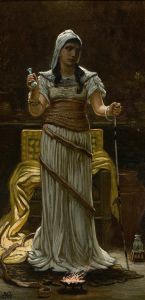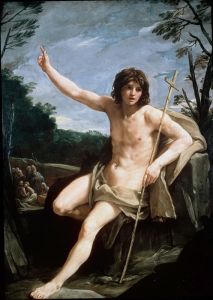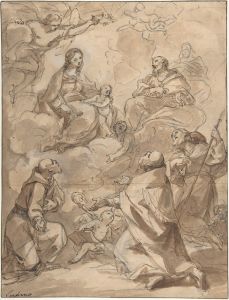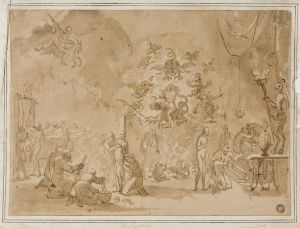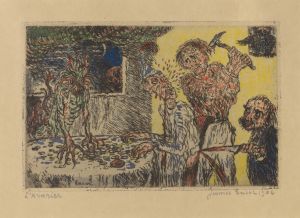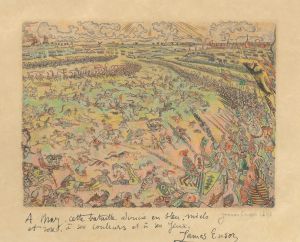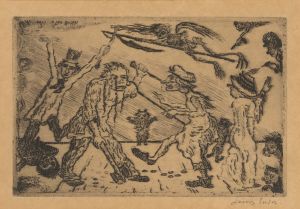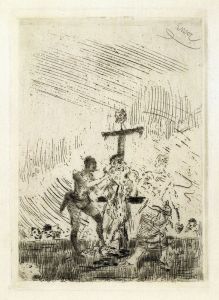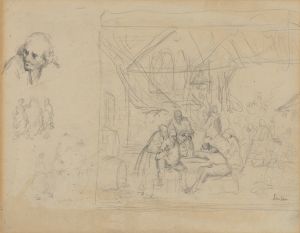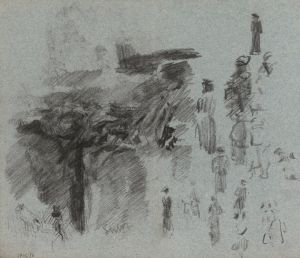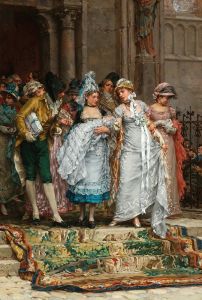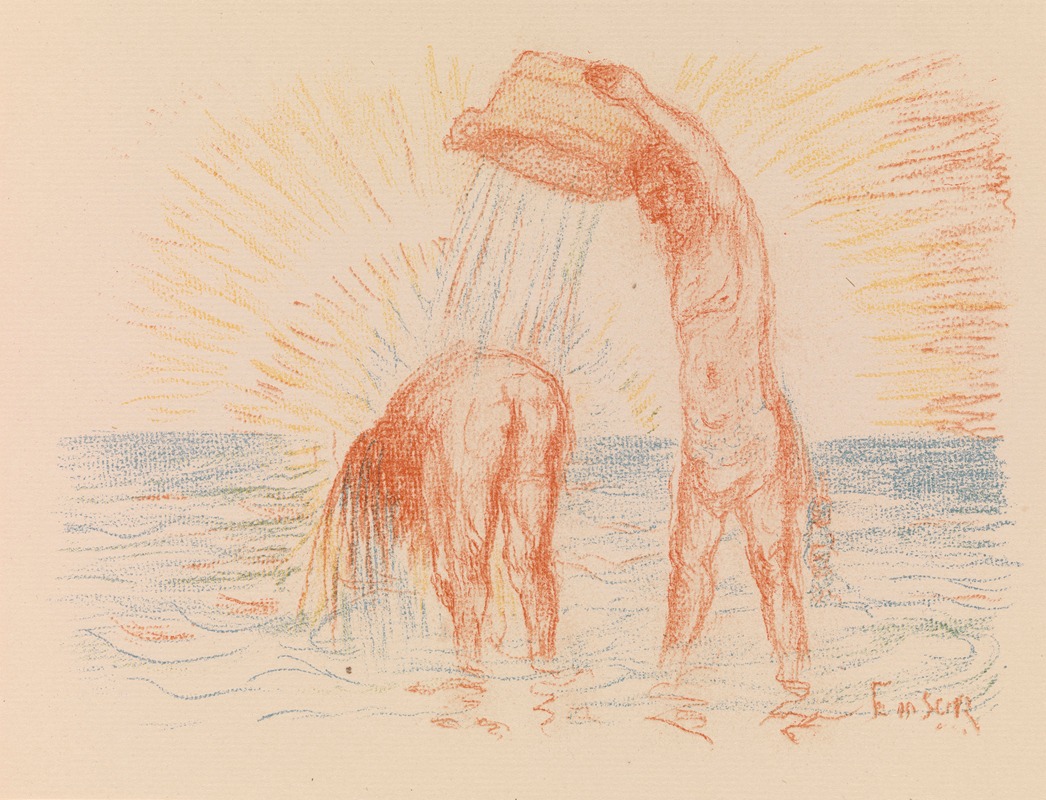
The Baptism of Christ
A hand-painted replica of James Ensor’s masterpiece The Baptism of Christ, meticulously crafted by professional artists to capture the true essence of the original. Each piece is created with museum-quality canvas and rare mineral pigments, carefully painted by experienced artists with delicate brushstrokes and rich, layered colors to perfectly recreate the texture of the original artwork. Unlike machine-printed reproductions, this hand-painted version brings the painting to life, infused with the artist’s emotions and skill in every stroke. Whether for personal collection or home decoration, it instantly elevates the artistic atmosphere of any space.
"The Baptism of Christ" is a painting by the Belgian artist James Ensor, created in 1900. Ensor, born in 1860 in Ostend, Belgium, is known for his unique and often provocative style that blends elements of Impressionism, Symbolism, and Expressionism. His works frequently feature fantastical and grotesque imagery, reflecting his fascination with masks, skeletons, and carnival scenes.
"The Baptism of Christ" is an oil on canvas painting that depicts the biblical scene of Jesus Christ being baptized by John the Baptist in the River Jordan. This event is a significant moment in Christian theology, symbolizing the beginning of Jesus' public ministry. Ensor's interpretation of this scene is distinctive and imbued with his characteristic style.
In the painting, Ensor employs a vivid and somewhat chaotic composition. The central figures of Jesus and John the Baptist are surrounded by a crowd of onlookers, angels, and other figures, creating a sense of movement and energy. Ensor's use of color is bold and expressive, with bright, almost garish hues that draw the viewer's attention to different parts of the canvas. The figures are rendered in a somewhat exaggerated manner, with elongated forms and dramatic gestures that heighten the emotional intensity of the scene.
One of the notable aspects of Ensor's work is his ability to blend the sacred with the profane. In "The Baptism of Christ," this is evident in the way he juxtaposes the holy event with the chaotic and almost carnival-like atmosphere of the crowd. This approach reflects Ensor's broader artistic vision, which often challenges conventional religious and social norms.
Ensor's choice to depict this particular biblical scene may have been influenced by his own complex relationship with religion. Although he was raised in a Catholic family, Ensor often expressed skepticism and criticism of organized religion in his work. This ambivalence is reflected in "The Baptism of Christ," where the sacred moment is both revered and subverted through Ensor's unique artistic lens.
"The Baptism of Christ" is part of the collection of the Royal Museum of Fine Arts in Antwerp, Belgium. The museum houses an extensive collection of Ensor's works, providing a comprehensive overview of his artistic development and contributions to modern art. Ensor's influence can be seen in the works of later artists, particularly those associated with the Expressionist movement.
Overall, "The Baptism of Christ" exemplifies James Ensor's distinctive style and his ability to infuse traditional subjects with a modern, often unsettling perspective. The painting remains an important work within Ensor's oeuvre and a significant example of early 20th-century European art.






